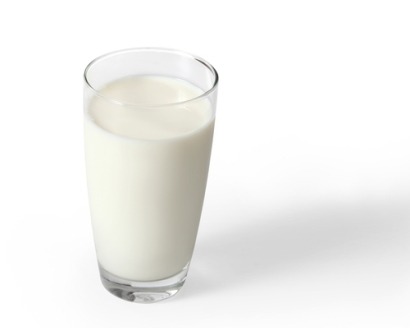'Get Milk': What The Health Experts Say
"Got Milk?" is a question fewer and fewer Americans are asking these days. Despite the decline in milk consumption over the past few decades — and the growing debate about whether milk is even good for you — health experts still agree that it's the healthiest drink you can reach for.
Milk is "a whole package of nutrients that you can't find in any other beverages," says Ashley Rosales, a registered dietitian with the Dairy Council of California. Other drinks just don't stack up in nutritinoal content, says Dr. Keith Ayoob, an associate clinical professor at the Albert Einstein College of Medicine in New York City who still operates a clinical practice today. "Milk is one of the most efficient foods," he says, "because not much else can deliver the most nutrition per calorie."
And what exactly are the nutrients in this complete package? The most familiar nutrients in milk may be vitamin D and calcium, two essential components for bone health. But there's much more than that: there's potassium, magnesium, phosphorous, plus plenty of protein and carbohydrates that make up milk's nutrient-rich profile. Miller points out that magnesium and phosphorous are also critical to bone health, and the potassium helps keep the heart healthy and blood pressure down. The potassium and protein levels also makes milk an ideal post-workout drink (hey, even the Olympians are doing it!), says Ayoob. "The potassium replaces fluids, and the proteins builds muscle — and people keep going for protein powder or whey powders after their workouts," Ayoob says. "Where do you think whey comes from? Milk."
It's all of the nutrients together that make it the complete package — and other milks fall in comparison. While other drinks may be fortified with nutrients, like vitamin D and calcium, you may not be getting the full benefits of milk. "We're uncovering that nutrients work with other nutrients," Rosales says. "While we've figured out that vitamin D and calcium go hand in hand, there's a whole matrix of other nutrients that are needed for bone health."
And as milk consumption is on the decline, kids and adults alike aren't getting the nutrients they need. Ayoob says about seven out of 10 kids don't get enough calcium, and the same for nine out of 10 teenage girls. While flavored milks in schools have gotten a beating before, Ayoob says he fully supports them, because any milk consumption is better than none at all. Even though flavored milks may have more sugars, "it's a judicious amount of sugar," Ayoob says. And if kids don't start drinking milk soon, "they'll graduate with degrees and lousy bones," he says.
But what about the alternative milks out there — soy, coconut, rice, almond, and more? "The most prominent reasons for consuming alternative milk is lactose intolerance or vegan diets," says Lauren Schmitt, a registered dietitian (and the owner of Healthy Eating and Training, Inc.). Fortunately, many alternative milks to cow milk are low in cholesterol, sugars, and calories, she says, but they don't hold a candle to the protein-filled cow's milk, which has 8 grams of protein per 8 ounces.
The ultimate recommendation for milk consumption from these experts: the recommended three servings of dairy per day, whether from cow's milk, yogurt, or cheese. "If you can get in two glasses of milk per day, that's awesome," says Ayoob. "You can pour it on your cereal in the morning, and make your coffee a latte in the afternoon. It's really not that difficult." And on a regular basis, all three recommended drinking 1 percent or skim milk for anyone older than 8 years old; kids less than 2 years old should drink full-fat milk. Organic milk and nonorganic milk have the same benefits, says Rosales; but Schmitt points out other scientific studies that show organic milk has more omega-3 fats, conjugated linoleic acid, and more antioxidants. "We do know that the cow's that provide this milk do not eat grain treated with pesticides, do not receive antibiotic treatment, do not get treated with bovine growth hormone, and do have time to graze," Schmitt says. "For those four reasons, I feel that this product is a healthy option even though it is twice the price." Still, milk may offer the most bang for your buck. Ayoob, who works with low-incomd families, has broken down the price of a gallon of milk: about 25 cents for a glass. "For that bottle of iced tea, you could have gotten a quart of milk," he says. "It's just wasted calories [for other beverages]. Milk is as inexpensive as you're going to get for your health."
The only con, Schmitt says, of milk is if you drink it in excess. "When an individual drinks more than 3 cups per day, the calories start to add up and may not be favorable for one's weight," she says. If you aren't a fan of skim milk, Ayoob suggests adding in powdered dairy or evaporated milk to give it a fuller, thicker flavor.
